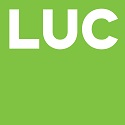Database and Reports from the London's Historic Character Thesaurus Project 2019 - 2021
LUC (Land Use Consultants), 2021. https://doi.org/10.5284/1086884. How to cite using this DOI
Data copyright © Historic England unless otherwise stated
This work is licensed under a Creative Commons Attribution 4.0 International License.
Primary contact
LUC (Land Use Consultants)
12th Floor
Colston Tower
Colston Street
Bristol
BS14XE
England
Tel: +44 (0)117 929 1997
Resource identifiers
- ADS Collection: 4059
- DOI:https://doi.org/10.5284/1086884
- How to cite using this DOI
Introduction

Historic England commissioned the 'London's Historic Character Thesaurus' project (Historic England Project No. 7929) to provide a coherent and transparent framework of terms for use in recording and analysing character in Greater London. LUC worked on the project between July 2019 and March 2021. The outputs of the LHCT project consist of a project report in the Historic England Research Report Series (Report No. 14/2021), The London Historic Character Thesaurus (LHCT) database and The LHCT User Guide. Both the structure of the LHCT and the component types were subject to review and approval by key Historic England stakeholders. A project summary was prepared for the project at inception and this also forms part of the deposited archive.
The LHCT database was developed as a relational MS Access database and populated with character types and associated scope notes. The database was configured to provide exports of all LHCT terms in spreadsheet, pdf or text file format to allow users to access it in a format which suited their needs, including for use in GIS applications. Exports in these formats form part of the archive deposited.
Character types in the LHCT cover both current historic character and aspects of previous character which may remain as an influence on the landscape. They were developed through critical review of pre-existing historic character thesauri and terms previously used in historic landscape characterisations of urban areas in England. Some pre-existing character types were modified slightly whereas others were adopted wholesale into the LHCT. These were supplemented by further character types to cover aspects of historic character present within Greater London which had not been grappled with in any detail by any previous historic characterisation initiatives. These character types were established through the project team's review of Greater London's current character and processes known to have been important in formation of the city, such as government, industry and maritime trade. Evidence for new character types was taken from historic mapping sources, aerial photography, Google Street View imagery and the project team's own experience of work in Greater London.
The User Guide consists of an introduction to the LHCT initiative, background to the principles of analysing and recording historic character, examples of use of the LHCT and the full listing of all LHCT character type terms. The final version of the User Guide developed by the project was created following comments from key HE stakeholders, the GLA and Westminster City Council.






